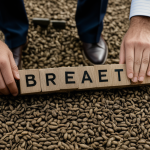Understanding Fashion Elements
The essence of personal style in the UK often revolves around certain core fashion fundamentals. These essential elements are pivotal in crafting a unique style and enhancing one’s overall appearance. Understanding the intricate balance between clothing, accessories, and individual expression is key.
Fashion in the UK is notably influenced by cultural nuances that dictate style preferences. These influences shape choices and preferences, giving rise to varied fashion statements. From the classic trench to daring streetwear, British fashion remains diverse and vibrant.
Key elements like fabric, color, and fit are crucial. They dictate not only the functionality of an outfit but also its aesthetic appeal. Customizing these elements according to personal preference allows for a distinctive presentation and confidence boost.
Cultural influences in the UK range from royal elegance to punk rebellion, representing a tapestry of history and modern style movements. This diversity allows individuals to draw from a rich pool of inspiration, making every fashion choice an opportunity for personal storytelling.
Cultural Influences on UK Fashion
The tapestry of UK fashion culture is woven with threads of history and diversity, a dynamic fusion that shapes self-expression. The nation’s rich cultural mosaic plays a pivotal role in fashion, bringing together elements from royal elegance to punk rebellion. This diverse pool of influences allows for the creation of distinctive and eclectic styles that are uniquely British.
Fashion icons such as Vivienne Westwood and the punk movement have made indelible marks, with bold styles challenging traditional norms. These movements have transformed not just personal attire but global perceptions of UK style. Icons infuse dynamic energy into fashion choices, encouraging experimentation and individuality.
The myriad of cultural influences enhances the creative potential within UK fashion, offering endless opportunities for innovation. This diversity is not only reflected in garments but extends to accessories, hairstyles, and overall aesthetic. The inclusiveness encourages individuals to draw inspiration from varied sources, crafting styles that are both personally meaningful and universally admired. Cultural diversity enriches fashion, turning every wardrobe choice into a potential cultural dialogue.
Fabric Choices and Textures
In the realm of UK fashion, fabric selections play a critical role in defining both the comfort and style of clothing. As the backbone of any garment, fabrics not only dictate the item’s aesthetic appeal but also its practical functionality. UK fashion embraces a variety of popular fabrics that cater to diverse style needs, blending classic preferences with innovative choices.
1. Popular Fabrics in UK Fashion:
UK wardrobes often feature staples like wool, known for its warmth and durability, especially suitable for colder seasons. Cotton remains a timeless favourite due to its breathability and comfort. Meanwhile, linen’s lightweight feel makes it an ideal option for warmer months. These fabrics each bring their own unique texture, adding depth to any outfit.
2. Impact on Comfort and Style:
The fabric chosen can dramatically alter how an outfit looks and feels. For example, silk adds a touch of luxury and smoothness, gracefully draping over the body. Tweed, often associated with British tradition, offers a robust texture and a classic appearance, perfect for creating distinguished and stylish looks. Understanding these textures and how they interact with the human form can help in crafting silhouettes that enhance one’s overall look.
3. Seasonal Considerations:
When selecting fabrics, seasonality must be a consideration. Heavier materials such as wool are ideal for winter months, providing insulation against the chill. Conversely, summer calls for breathable fabrics like cotton or linen to keep cool. By aligning fabric choices with the seasonal climate, one can maintain comfort without sacrificing style.
In conclusion, wise fabric selection is integral to crafting outfits that are both functional and fashion-forward, showcasing the versatility and depth of UK fashion styles.
Color Palettes for UK Fashion
Step into the vibrant world of color trends where UK fashion color palettes continuously evolve. Each season brings its own unique hues, ranging from pastel shades in spring to richer, warmer tones for autumn. This cyclical change ensures attire remains fresh and relevant.
Choosing a color palette that complements your skin tone is essential for a cohesive look. For those with a cooler undertone, consider blues and purples, while warmer undertones might favour earthy tones like rust or olive. These choices enhance natural features and bring harmony to your overall aesthetic.
UK fashion is known for its ability to blend traditional styles with contemporary flair. This is evident in popular color combinations like navy paired with mustard or classic black and white ensembles. These pairings remain timeless while still allowing for personal expression. Being mindful of these shades and combinations will enhance your wardrobe, making each outfit an artistic statement.
Accessory Recommendations
Fashion accessories are vital in elevating any outfit, adding depth and personal flair. In the UK fashion scene, key accessories such as hats, scarves, and jewelry are not just additional items but integral components that refine and complete an ensemble. These elements can significantly amplify one’s style, drawing attention and making a bold statement.
To expertly use these accessories, consider tips like layering necklaces for a modern, chic look or selecting statement earrings to highlight your features. Accessories offer a simple yet effective means to express individuality while keeping up with fashion trends. For instance, a well-chosen belt can transform a basic outfit into one with structure and style.
UK culture deeply influences accessory choices, infusing uniqueness and tradition. The iconic Burberry trench outfit, often paired with classic plaid scarves, exemplifies British elegance and practical style. Cultural diversity further enriches these choices, allowing you to embrace influences ranging from the edgy vibe of punk to the timeless appeal of royal fashion. Hence, the right accessories are more than just adornments—they are tools for self-expression and storytelling within the vibrant tapestry of UK fashion.
Outfit Combinations for Various Occasions
Creating the perfect ensemble requires an understanding of stylish outfits and how they adapt to different occasions. Whether casual, formal, or work-oriented, each setting demands specific styling considerations.
For casual outings, opt for comfort-focused attire that still retains a chic edge. A pair of well-fitted jeans paired with a stylish top or a flowy shirt can strike the right balance. Layering with a simple jacket adds depth and adaptability to changing temperatures.
In formal settings, attention to detail is paramount. A tailored suit or a sophisticated dress can serve as the foundation of a polished look. Pair these with classic accessories, such as a sleek watch or subtle jewelry, ensuring a refined and put-together appearance.
Work environments often call for versatile attire that can transition from day to evening. Consider a blouse and pencil skirt ensemble or a commanding blazer over a shirt. These combinations allow for flexibility, letting one adjust to meetings and after-work gatherings seamlessly.
Weather also plays a crucial role in occasion-based styling. For colder climates, incorporating layers with heavier fabrics like wool is advisable, whereas breathable fabrics and lighter outfits are preferable in warmer conditions. Embrace the opportunity to mix and match, creating outfits that are not only functional but also narrate personal style stories suited to the UK’s diverse climate.
Seasonal Styles and Trends
In the lively world of UK fashion, keeping pace with seasonal fashion trends is crucial for any style-conscious individual. Each season brings its own unique flair, transforming wardrobes and influencing personal style. As always, the aim is to balance tradition with innovation, allowing one to remain modern yet true to timeless aesthetics.
Historical Context of Seasonal Styles
UK fashion inherently draws from a rich tapestry of history, where past styles often resurface with modern twists. During colder months, British fashion traditionally leans towards layered wool ensembles, a nod to its classic tailoring heritage. Summer trends often see the revival of lightweight fabrics inspired by past decades but styled with modern silhouettes. By understanding these cycles, one can predict and adapt to evolving trends with ease.
Adapting to Current Trends
Fashion enthusiasts eager to align with current trends should focus on integrating statement pieces that reflect seasonal palettes and innovative cuts. For example, investing in a vividly coloured trench coat or experimenting with patterned textures can elevate an autumn wardrobe. It’s all about incorporating standout items that resonate with the prevailing zeitgeist while ensuring personal comfort and suitability.
Tips for Personal Style Adaptation
When adapting personal style to mesh with the latest trends, the key is in moderation and personalisation. Blend seasonal highlights with staples that already exist in your wardrobe. For instance, adding a distinctive accessory or a trendy colour can refresh your look without complete overhaul. The harmony between new and familiar elements encourages versatility, allowing style to evolve naturally with the changing seasons.



